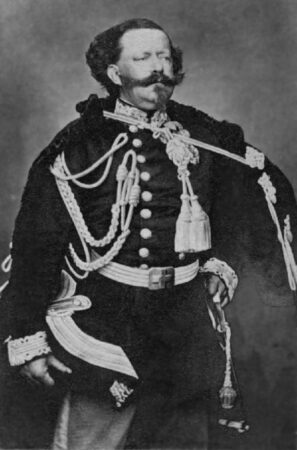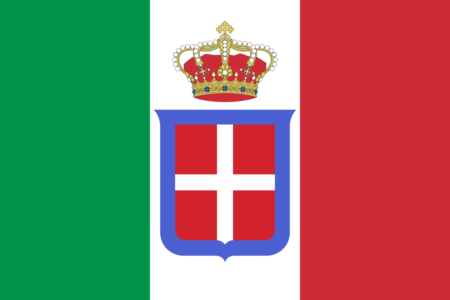Maturity
The phase of maturity for Siena coincides Despite the liberal reforms implemented by Grand Duke Leopold II after 1824, Italian nationalism had been inflated during the Napoleonic wars. The desire for unification and independence had become a matter of priority for most Italians.
On 29 May 1848 in one of the most symbolic battles of the First Italian War of Independence (1848-1849) a large number of volunteers from Siena mostly students joined the rest of Tuscan and Neapolitan volunteers in Curtatone (near Mantua) where they managed to repel a far more organized & numerical superior Austrian army.
In February 1849, Leopold II had to abandon Tuscany and in 1855 the Austrian troops departed as well. In December 1859, the Grand Duchy of Tuscany ceased to exist and a few months later it was annexed to the Italian Kingdom of Sardinia. Italy was unified in 1870. Siena was now one of the cities of the Kingdom of Italy & Vittorio Emanuele II its king.



The famous Palio remained a source of local pride giving a sense of individualism to the Sienese who competed fiercely every year for excellence in the so-called Contrada. As an example of what has been called “dual identity” for most Italians, their provinces and their old city-state bond, the Sienese of the 19th century showed themselves to be both aware of their Sienese identity and convinced patriots throughout the Risorgimento. The horse jockeys were the stars of the era. Contrary to the 18th century situation they changed sides a lot.
The industrial age was inaugurated with the operation of the railway which connected Siena with Empoli on the north and Chiusi, Orvieto and Rome on the south and was predominantly financed by Sienese private capital.
Population surged again reaching 30.000 by the end of the 19th century and Siena expanded for the first time beyond its walls. Fortezza Medicea built on the orders of the Florentine rulers after the Battle of Marciano was converted into a public park.



During Fascism the Contrade made a rare venture out of the natural context of the city: one in Rome in 1930 for the “princely wedding” of Umberto of Savoy and Maria José of Belgium, another at the Boboli Gardens in Florence in 1936. There, despite themselves and confused with other representations of “manly games” which the fascist regime had resurrected, considering them useful for forging an “agile, fast and agile” youth, the Palio extras greeted Hitler and Mussolini.
With the exception of World War II and the bombardment of the central rail way station by the Allies, the history of 20th century for Siena was a history of preservation and maintenance of its historical heritage.
A master plan, adopted just after World War II, directed high-density growth to a few limited areas outside the walls leaving the core of Siena, protected. Siena has been a “car free” city since 1966, making it one of the first European cities to ban motor traffic from its center.



Today Siena is a city of 52.000 people that has accomplished a goal of modern urban growth management with an utmost respect to the past. It combines urban green areas within a clearly demarcated boundary between city and country.
Its historic center is acknowledged by UNESCO as a world heritage site and succeeds in attracting hundreds of thousands of tourists from Italy and abroad without its citizens ever losing their deep rooted sense of neighborhood identity.
The Medieval alleys, the grand Palazzi and cobble stoned piazzas, its museums and art treasures, its impressive cathedral and historic basilicas, its mesmerizing countryside, its world famous Italian cuisine and first class wines and of course its people with their singing-like language, form an amalgam that can put a spell on every visitor. If you are a history buff like us..there’s no question about it. You’ll love this city .. “Siena è bella”.




